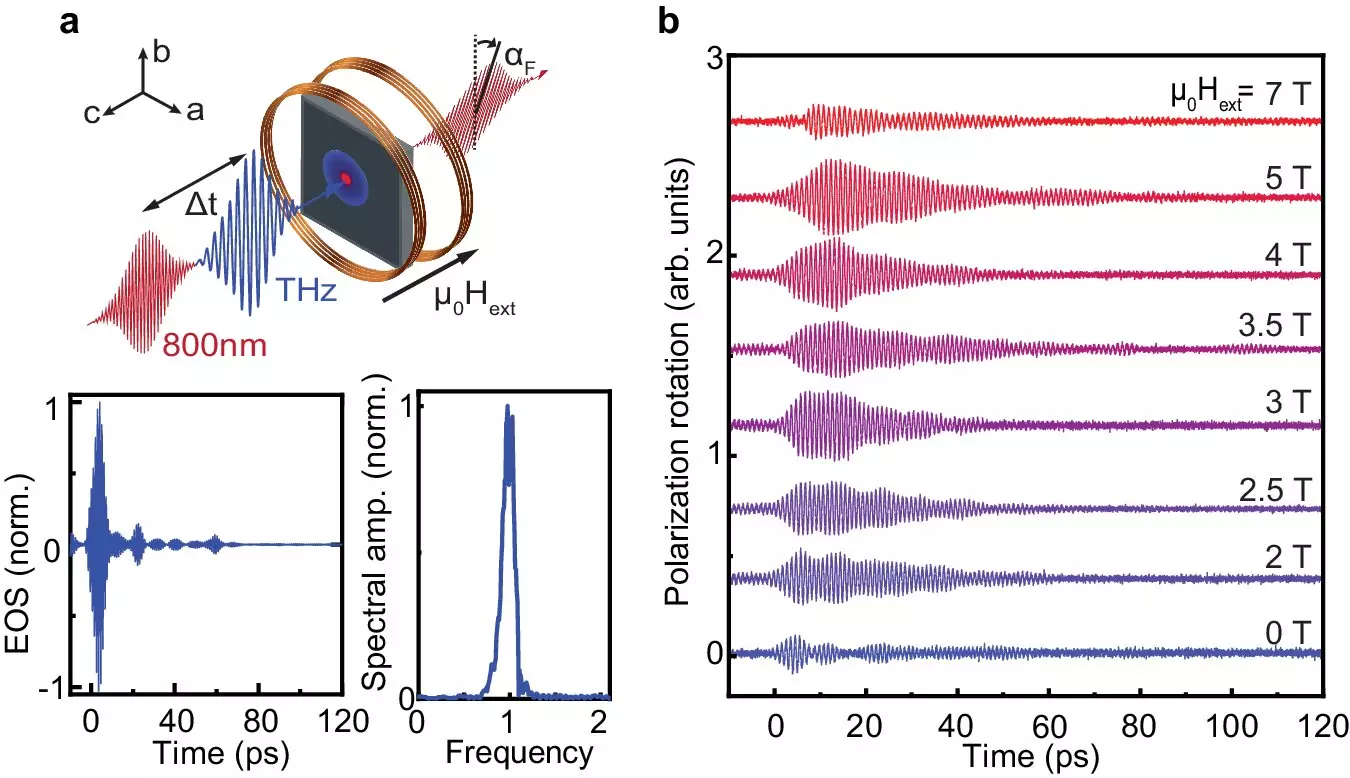As the world grapples with increasing energy demands, data storage centers are on track to account for nearly 10% of global energy consumption. This alarming statistic not only highlights the inefficiencies of current data storage technologies but also underscores an urgent need for innovation. Traditional ferromagnetic materials, while foundational to today’s data storage solutions, pose considerable limitations. Their methods of storing and processing data, through ferromagnets, result in significant energy loss. A paradigm shift towards antiferromagnetic materials could revolutionize the landscape of data storage, promising both enhanced speed and energy efficiency.
Antiferromagnetic materials, particularly cobalt difluoride (CoF2), have emerged as promising alternatives to ferromagnetic materials. Unlike their ferromagnetic counterparts, which align spins in the same direction, antiferromagnets have neighboring spins that are oriented oppositely. This unique structure not only mitigates magnetic interference but also enables remarkably faster data operations, projecting speeds as much as 1,000 times greater than conventional systems.
In a world where every millisecond counts, such advancements in speed could significantly impact the performance of data storage solutions. Not only are antiferromagnets faster, but they are also more prevalent than ferromagnetic materials. This dual advantage positions them as a leading candidate in the race for energy-efficient data storage solutions.
At the heart of this technological revolution lies spintronics, a field that leverages the intrinsic spin of electrons to facilitate data processing. Traditional electronic systems rely on the flow of electric charges, resulting in heat generation and energy waste. In contrast, spintronic devices have the potential to carry information through spin waves—quasiparticles known as magnons—that propagate without the movement of charge carriers. This fundamental difference holds the key to reducing energy consumption while increasing operational efficiency.
The recent research highlights a pivotal advance in understanding the interaction between spins and the crystal lattice in antiferromagnetic materials. By studying the spin dynamics of CoF2, researchers discovered that the coupling of spins with lattice vibrations, or phonons, could be effectively manipulated. This breakthrough not only enhances the speed of data transfer but also harbors the capacity for considerable energy savings—an essential aspect as the world’s energy crisis deepens.
A critical leap in this research is the exploration of Fermi resonance, a long-established concept that describes the interaction between different vibrational modes within a material. This study revealed that for the first time, scientists successfully established a strong coupling between the magnons and phonons in antiferromagnetic systems under Fermi resonance conditions. This energy transfer between subsystems can govern and enhance data storage capabilities significantly.
The experimental setup, utilizing high-power terahertz radiation at the Helmholtz-Zentrum Dresden-Rossendorf, allowed researchers to finely tune the interaction between these spins and lattice vibrations. This tuning facilitated a level of control over the energy exchange that could redefine how we approach information storage and processing. Such advancements raise the possibility of hybrid states where the dynamics of magnons and phonons can be carefully controlled for optimal performance.
The ramifications of these findings could extend far beyond mere academic curiosity. With the operational frequency of antiferromagnetic data storage potentially reaching terahertz scales, there is an immense opportunity to significantly reduce the energy footprint of data operations. By lowering the energy requirements for bit writing processes, these materials could play a pivotal role in countering the rising energy demands of our digital infrastructure.
Moreover, as we continue to advance in the field of magnonics and phononics, the ability to manipulate the spin-lattice coupling on demand opens up new avenues for technology that could surpass the limitations of existing systems. As researchers strive to expand the applicability of Fermi resonance to other quantum materials, we could be on the cusp of a new technological era marked by unprecedented energy efficiency and operational speed.
The progress reported by the international research team is an encouraging indicator of what lies ahead in the field of materials science and technology. With an eye toward future applications, researchers are poised to unlock further potential within antiferromagnetic materials and other emerging quantum systems. As we navigate the challenges of an energy-constrained world, such innovations promise to pave the way for sustainable data storage solutions that not only meet current demands but also anticipate the needs of the future.

